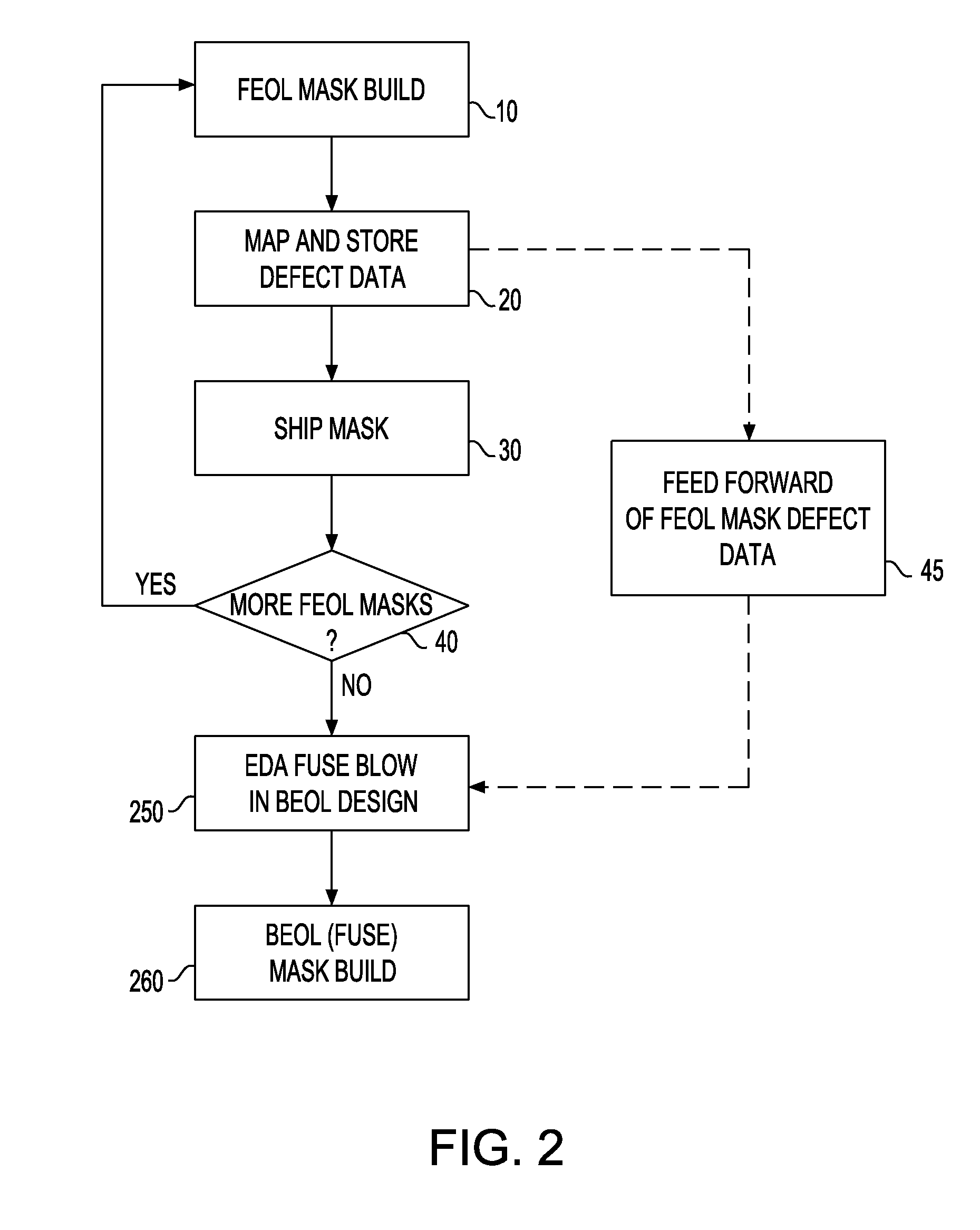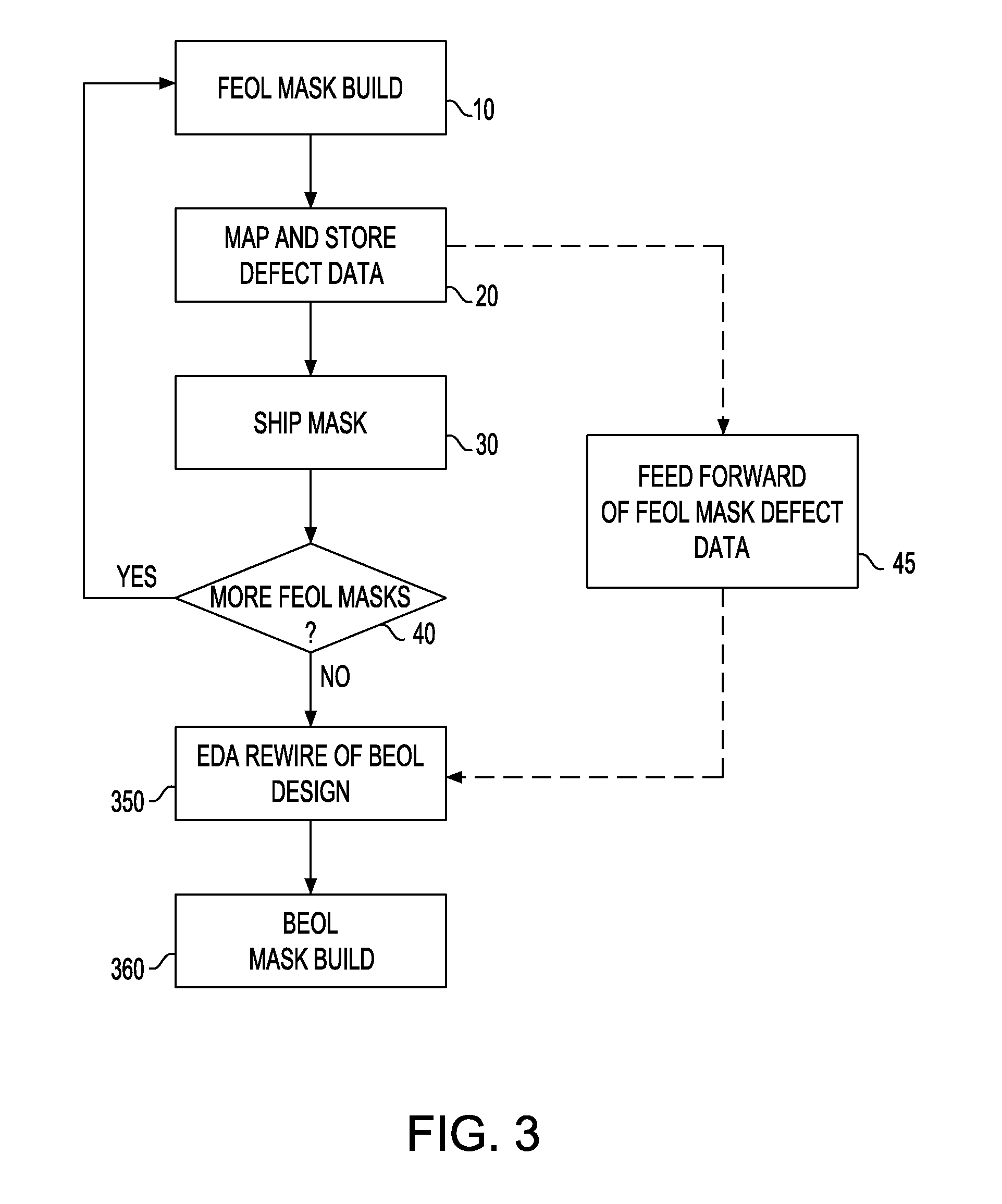Method of patterning a substrate by feeding mask defect data forward for subsequent correction
- Summary
- Abstract
- Description
- Claims
- Application Information
AI Technical Summary
Problems solved by technology
Method used
Image
Examples
Embodiment Construction
[0010] In view of the difficulties of fabricating masks which are free of defects, a way is provided according to an embodiment of the invention to pattern features of a microelectronic or micro-electromechanical substrate, for example, a chip, integrated circuit or wafer, without requiring masks to be free of defects. Particularly when one mask of a sequential series of masks is found to have a defect, a way is provided to pattern features of a substrate using the defective mask and one or more subsequent sequential masks in the series so as to produce a fully functional substrate which is free of defects.
[0011] For example, in one embodiment, a first mask is checked after fabrication to detect features that are defective. If the mask has no defects, it will be employed as usual to pattern the features of the substrate. However, when the mask is defective, it is not automatically scrapped, as it would be in a conventional process. Instead, the mask will still be used to pattern fe...
PUM
 Login to view more
Login to view more Abstract
Description
Claims
Application Information
 Login to view more
Login to view more - R&D Engineer
- R&D Manager
- IP Professional
- Industry Leading Data Capabilities
- Powerful AI technology
- Patent DNA Extraction
Browse by: Latest US Patents, China's latest patents, Technical Efficacy Thesaurus, Application Domain, Technology Topic.
© 2024 PatSnap. All rights reserved.Legal|Privacy policy|Modern Slavery Act Transparency Statement|Sitemap



